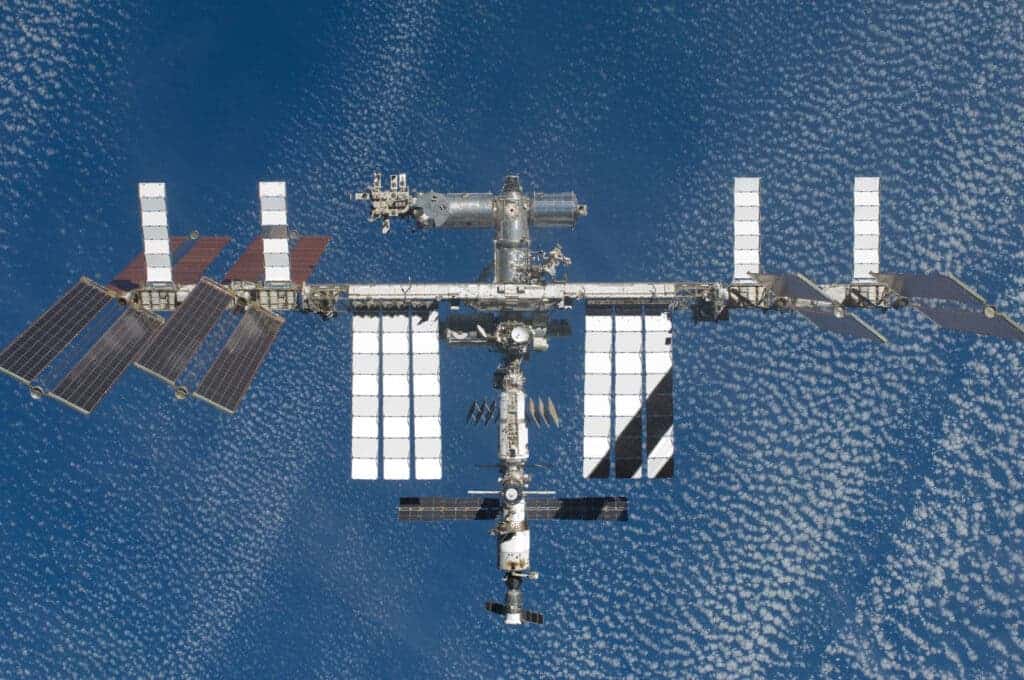The International Space Station has docked its first fully-private space flight: a four-member crew from Houston-based Axiom Space.

NASA has, for quite some time now, tried to pass on the baton of space exploration to private enterprises. The International Space Station, our foothold in space, is officially scheduled for decommission in 2031. The agency hopes that a privately-owned station will be able to replace it after the fact.
The emergence of non-governmental space-faring companies seems to give credit to NASA’s hopes. And the last week saw a new development towards the agency’s hope: the first docking of a private spaceship with the ISS.
Bold new frontier
Known as the Axion Mission 1 (Ax-1), the ship carried a four-strong crew led by former NASA astronaut Michael Lopez-Alegria. Lopez-Alegria is a dual citizen of the United States and Spain who has flown to space four times over his 20-year-long career. His last visit to the ISS took place in 2007.
The other three crewmates were American real estate investor Larry Connor, Canadian investor Mark Pathy, and Israeli former fighter pilot and investor Eytan Stibbe.
The four reached the ISS inside Endeavor, a Crew Dragon capsule, launched by a SpaceX Falcon 9 rocket on Friday from the Kennedy Space Center in Florida, USA. It docked with the station at 12:29 GMT on Saturday. The crew unboarded two hours later.
NASA hailed its three-way partnership with Axiom and SpaceX as a touchstone towards the commercialization of the Low Earth Orbit, the region of space in which the ISS resides. As private entities move into this region of space, promoting trade and development, the agency will be able to free up resources to handle missions deeper into space.
“We’re here to experience this but we understand there’s a responsibility,” Connor commented on NASA’s live feed, adding that they “need to get it right” as the first civilian crew aboard the station.
The trip includes an eight-day stay on the station and an eventual return somewhere in the Atlantic Ocean. Each of the crew paid $55 million for the journey. Although the spicy cost of a ticket means that most of us still cannot even begin to afford a trip to space yet, each such trip holds the promise of space travel eventually becoming relatively accessible. The Ax-1 is especially important in this regard, as it is the first mission to ever feature an all-private crew flying a private spacecraft to the ISS.
While Axiom charged for the tickets, a large part of the costs went to SpaceX for transportation, and to NASA for use of the station. Axiom and SpaceX have partnered up for four such missions in the future, the second of which, Ax-2, has already been approved in principle by NASA.
But all that money will not go to waste. The four intrepid space explorers are scheduled to carry out no less than 25 research projects while off-world. These include an MIT demonstration of smart tile technology, a robotic swarm that can self-assemble into various forms of space architecture. Another involves the use of cancer stem cells to grow mini-tumors; the four will use this opportunity to study what biomarkers can be used in the early detection of cancers back down on Earth.
“Our guys aren’t going up there and floating around for eight days taking pictures and looking out of the cupola,” Derek Hassmann, operations director of Axiom Space, said during a pre-launch briefing.
The Axiom crew will live and work alongside the ISS’s regular crew, which is currently made up of three Americans, one German, and three Russian astronauts.
Axiom plans to eventually build its own private space station, and the Ax-1 mission will act as a springboard toward that goal. The first module of the station is aimed for launch in 2024. At first, this new station will be attached to the ISS, and eventually detach and carry out autonomous operations when the ISS is finally brought back down to Earth.
Was this helpful?



